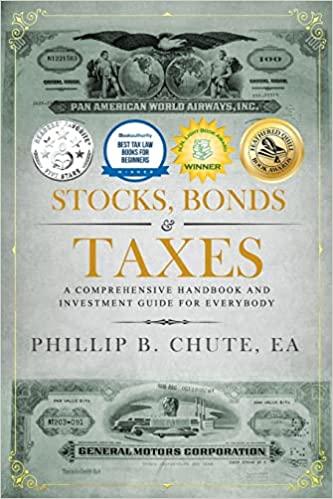Question
I need the rest of the questions answered. The last post didnt get all of them answered. They were supposed to be in the solutions
I need the rest of the questions answered. The last post didnt get all of them answered. They were supposed to be in the solutions manual.
Textbook: Corporate Finance by Michael Ehrhardt and Eugene Brigham
Mini Case Chapter 9,
During the last few years, Harry Davis Industries has been too constrained by the high cost of capital to make many capital investments. Recently, though, capital costs have been declining, and the company has decided to look seriously at a major expansion program proposed by the marketing department. Assume that you are an assistant to Leigh Jones, the financial vice president. Your first task is to estimate Harry Davis s cost of capital. Jones has provided you with the following data, which she believes may be relevant to your task:(1) The firm s tax rate is 40%.(2) The current price of Harry Davis s 12% coupon, semiannual payment, non callable bonds with 15 years remaining to maturity is $1,153.72. Harry Davis does not use short-term interest-bearing debt on a permanent basis. New bonds would be privately placed with no flotation cost.(3) The current price of the firm s 10%, $100 par value, quarterly dividend, perpetual preferred stock is $116.95. Harry Davis would incur flotation costs equal to 5% of the proceeds on a new issue.(4) Harry Davis s common stock is currently selling at $50 per share. Its last dividend(D 0 ) was $3.12, and dividends are expected to grow at a constant rate of 5.8% in the foreseeable future. Harry Davis s beta is 1.2, the yield on T-bonds is 5.6%, and the market risk premium is estimated to be 6%. For the own-bond-yield-plus- judgmental-risk-premium approach, the firm uses a 3.2% risk premium.(5) Harry Davis s target capital structure is 30% long-term debt, 10% preferred stock ,and 60% common equity. To help you structure the task, Leigh Jones has asked you to answer the following questions.
Part G) What is your best estimate of cost of equity?
Just use an unweighted average of the three different cost of equity numbers you have computed.
Question 9 5 pts
Part H) What is the WACC?
Question 10 5 pts
Part L) What is the division cost of equity?
Question 11 5 pts
Part L) What should be the Division WACC? (Note: The book states that the Cost of Debt is 12%. This is confusing because the book usually uses the term "Cost of Debt" as the After-Tax Cost of Debt. It this problem, the book is using 12% as the Interest Rate or Pre-Tax Cost of Debt. The WACC calculation uses the After-Tax Cost of Debt.)
*Make certain that you are using the after-tax cost of debt based on 12% interest rate.
Question 12 5 pts
Part O) What is the estimated cost of equity?
Question 13 5 pts
Part O) Assuming that the bond sells for 100, what is the cost of debt?
*Recognize that "the bond sells at 100" means that the bond sells at 100% of face value. Also, make sure that you are inputting the cost of debt and not the interest rate.
Step by Step Solution
There are 3 Steps involved in it
Step: 1

Get Instant Access to Expert-Tailored Solutions
See step-by-step solutions with expert insights and AI powered tools for academic success
Step: 2

Step: 3

Ace Your Homework with AI
Get the answers you need in no time with our AI-driven, step-by-step assistance
Get Started


